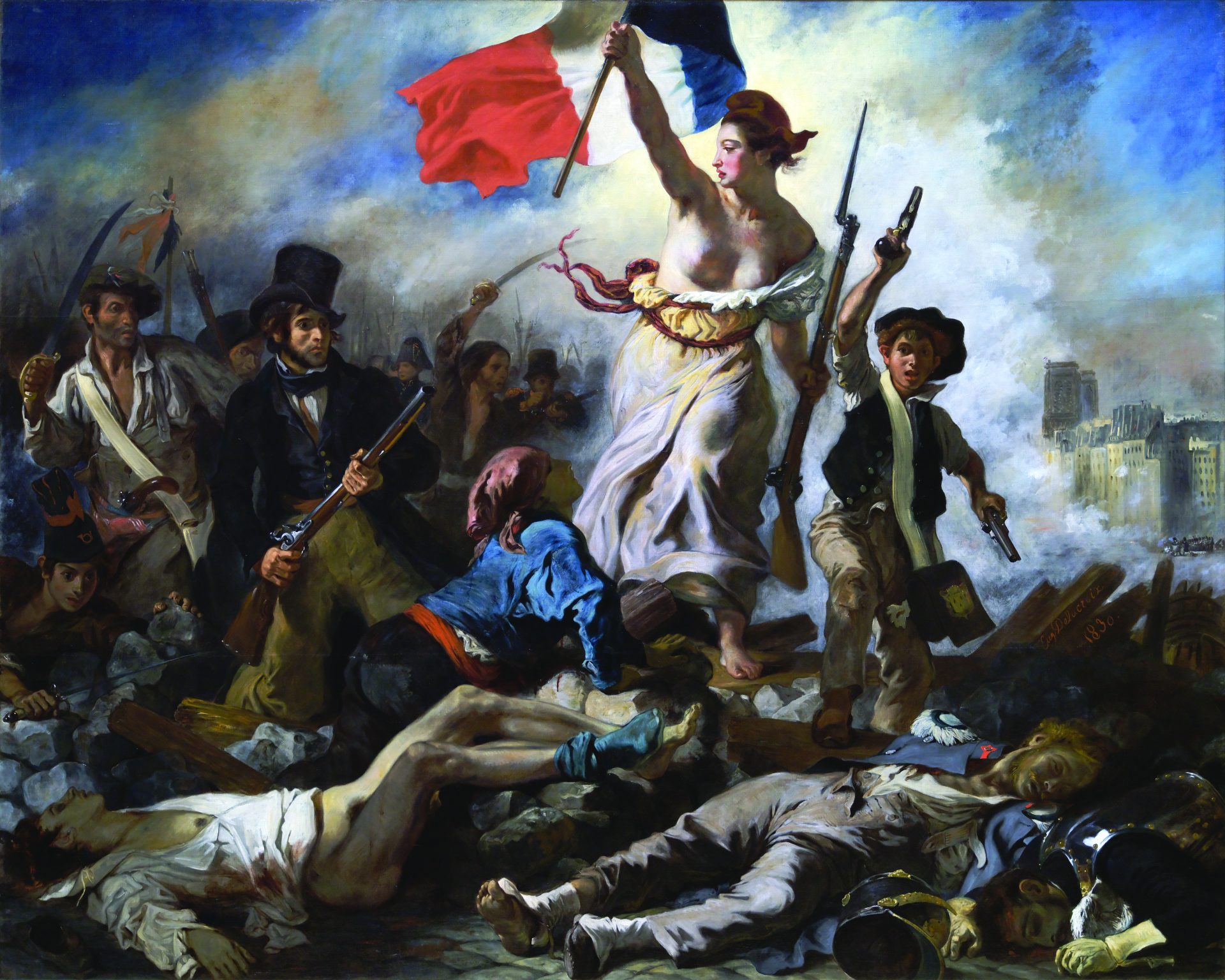
Rick Moody’s latest novel is a riotous gloss on an already forgotten flourish of presidential theater: George W. Bush’s 2004 announcement that the United States would send a manned mission to Mars in the coming decades. Bush’s proposal recalled JFK’s optimistic—and fulfilled—moon-landing prediction but was transparently an election-year ploy as the war in Iraq soured; it betrayed an edginess about a new, non-American century of Chinese ascent and epochal domestic decline. Slyly taking Bush at his word, Moody imagines a 2025 NASA expedition to the Red Planet and conjures a not-so-distant future that is less a forecast of the world we are soon to inhabit than a fantasia drawn from early-century jitters about national demise. “Who believed this stuff?” runs the beginning of a page-long rant of exasperated rhetorical questions. “Who believed in belief? Who believed in the political process? Who believed in the institution of the presidency? Who believed in anything but grinding it out, as the young people said, hoping only to forestall the worst that loomed? Who believed that the markets could right themselves? Who believed in the markets?”
Moody fills in the history of our next fifteen years through glancing references, sometimes emphasized with the winking phrase “as you know,” unveiling an era in permanent downturn. Having ceded its global reach to the newly dominant Sino-Indian Free Trade Compact, the United States is more often than not referred to merely as a signatory to NAFTA, and not necessarily its primary member: “We were citizens of a post-industrial country that no longer produced much. Our rate of emigration exceeded our rate of immigration. . . . At this late stage, when all the hooting and hollering was over, who would care really if there was violent insurrection in the United States of America?” By 2025, normality consists of nightly scheduled blackouts, algae-fueled vehicles, personal digital devices implanted beneath the skin, nanotechnological robots, a vogue for violent, regressive “proto-hominid” sex as outlined by a nationally feted sexuality guru, and “legalized information-gathering on all citizens.”
Moody’s comic tour de force encompasses scavenger survivalists, careerist NASA functionaries, a weak and peripatetic president, and a DeLillo-esque mass spiritual movement called the omnium gatherum, whose desert conclave supplies the backdrop for the denouement. Much of this near future seems uncomfortably plausible, if exaggerated, but Moody’s dystopia takes shape more as a suggestive series of evocations than as a fully fleshed-out construct. He juxtaposes the encroaching nihilism with a countervailing playfulness, a mordant ebullience—as when he introduces familiar science-fiction anachronisms such as jet packs or concocts a scene of bumbling mishaps involving an outrageous marital aid called the Pulverizer. Animated by Moody’s inventive energies and dark wit, the novel is neither gloomy nor grim, preoccupied though it is with infection, contagion, and death.
This sprawling space opera is divided into two books with almost no overlap in characters or setting; the first book narrates the Mars journey through its myriad accidents, betrayals, unlikely couplings, murders, banalities, and occasional wonders via the diary of one of the mission’s nine astronauts, Colonel Jed Richards, and the second charts the travels of Richards’s severed arm, still alive and bearing a pathogen of human origin that has mutated on Mars (part of an experiment in biological weaponry directed by the US government), after it falls to Earth near the down-at-the-heels border city of Rio Blanco, Arizona, and threatens to infect the entire Southwest.
Like any American writer worth his salt, Moody traffics in ambiguous symbols, and the diseased arm possesses the fraught doubleness of an emblem out of Hawthorne, a writer at the center of his 2002 memoir, The Black Veil. At once predator and victim, hunter and prey—its middle finger was sliced off prior to the explosion that sent it plummeting earthward, and once aware of the hand’s threat the government seeks to annihilate it—Richards’s severed appendage, like the marauding arm in Sam Raimi’s Evil Dead 2, is a ruthless killing implement when it needs to be. Still, it’s more than simply a death-dealing juggernaut. It sports a wedding ring and shows off enviable prowess in pleasuring members of both sexes. The limb behaves at times like a trickster figure in a rollicking postmodern fable; you root for it even as it efficiently dispatches its victims. Synecdoche and cipher of the human, stubborn survivor against all odds, the infected arm carries an uncertain moral valence.
Adding to the confusion is the seeming immunity of women to the deadly pathogen—and the germ itself may carry the secret to human reanimation and, thus, immortality. So believes Woo Lee Koo, a Korean-immigrant scientist at the University of Rio Blanco, who hopes that the Martian germ strain can resurrect his wife’s cryogenically frozen body. Koo’s harried, rather sad life is taken up with grief for his wife and disappointment over his sullen son, Jean-Paul, who is preoccupied with fantasizing business schemes and parsing his ambivalence about his “fucking ridiculously hot girlfriend,” as he likes to refer to her. In another subplot, Koo’s lab assistant, Noelle, becomes the beloved of a chimpanzee, Morton, who acquires language when injected with cells from Koo’s wife and is soon the most polished being in the book: a thoughtful, courtly speaker who ably cites French philosophy and, alas, pop-psychology relationship guides.
In the degraded milieu of 2025 America, Morton’s wondrous change is a sort of mocking post-human riposte to the traditional question of what it means to be human, with its tacit humanist presumption that the answer has something to do with learning and cultivation. The behavior of those around him, his beloved excepted, is patently out of step with his elegant phraseology and civilized restraint.
Over his past several books, Moody has shown off a baroque sensibility that embraces outlandish conceits and digressive detours. Here, as if the madcap high jinks and mischievous social satire weren’t sufficiently byzantine, he has embedded his tale in an elaborate narrative frame. Either you like this sort of thing or you don’t (I do), and those without patience for his restless fabulist play may find the framing device self-indulgent or convoluted. The saga of the Mars mission in The Four Fingers of Death is presented not as an actual event but as a novelization of a future remake of the 1963 horror film The Crawling Hand. The adaptation’s author, Montese Crandall, a middling creative-writing instructor who specializes in scrunching his novelistic ideas into koanlike (or Twitter-like) single sentences and supports himself primarily by selling rare baseball cards at flea markets in Rio Blanco, wins the right to undertake the novelization in a chess match with a mysterious, half-crazed ex-convict alternately called D. Tyrannosaurus and Tyrone, who is after one of Crandall’s especially valuable cards. As a literary joke, Crandall’s instant transformation from fussy minimalist to shoot-the-moon maximalist—and his delight in his $750 payment, surely even more a pittance in 2025 dollars—is the first of the book’s many startling metamorphoses. It’s also a wry jab at the tyranny of the MFA-beloved “omit needless words” aesthetic and suggests that the enforced productivity of hack work, or at least the campy glories of cinematic schlock, might somehow be liberating.
Crandall’s motives in writing are not primarily mercenary: He hopes that his novelization will impress his ailing wife, Tara, whose long bout with pulmonary disease, despite a double lung transplant, has entered a precarious and possibly fatal phase. His manic creation thus goes far beyond what anyone might reasonably expect from a B-movie novelization. It is a labor of love and, in an unlikely register (Moody distrusts lyricism, though it occasionally bubbles up), an expression of tenderness, a mood present especially in the closing pages.
Conceptual wizardry and emotional resonance are not reconciled with ease, nor do many writers attempt such a rapprochement, so it is here, in the intersection of narrative excess and genuine feeling, that Moody is at his most daring and arresting. For all the busy unruliness of the story, The Four Fingers of Death is a sustained meditation on the human body—its vulnerability and certain decay, its wavering relation to the self (which, under various bodily pressures, such as those of outer space, can become new and unrecognizable to itself), and its longing to unite with other bodies, sometimes malevolently via contagion but also through the ecstasy of sex and the more lasting bonds of commitment to another person or community. Speaking of the corruptions of sin, Jesus commanded cutting off a diseased part of the body to save the whole, but for the post-Christian Moody, the corrupted part is the whole, inescapably so, and it can’t ever be saved. “Nothing can last here for long, not without effort,” reflects Crandall in the book’s closing pages, as he drives his dying wife across the desert, but ultimately he sings a ragged hymn to their endurance: “We were always something, we were always trying, always fucking up, always regretting, always laughing, always in debt . . . and so always was a very fine word, if you wanted to leave on a memorable high note, and I will always remember that word always.”
James Gibbons is associate editor at the Library of America and a frequent contributor to Bookforum.






